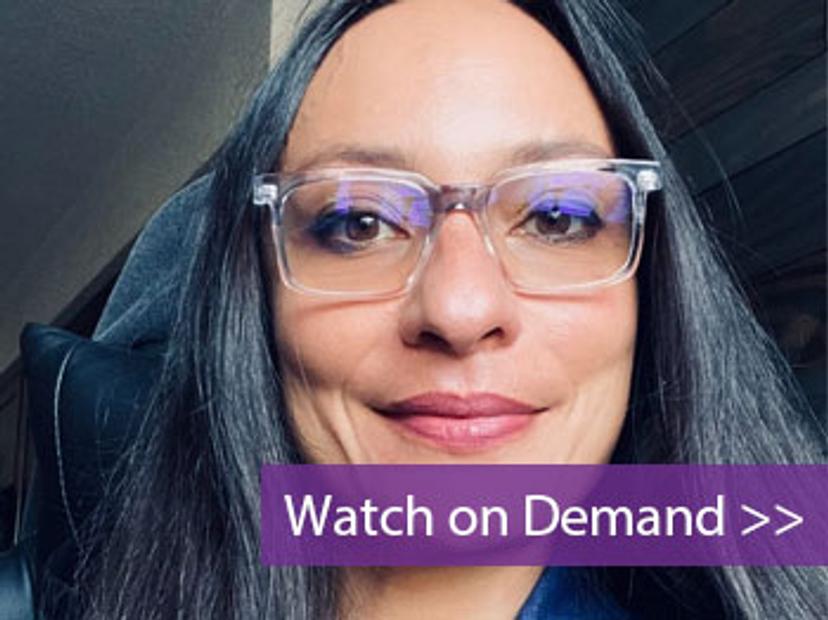What is single-cell sequencing and why does it matter?
Watch this on-demand webinar to discover the benefits of using single-cell sequencing assays in your research
25 Jan 2022

Single-cell sequencing enables scientists to uncover heterogeneity that bulk techniques overlook, bringing clarity, detail, and nuance to studies across a wide range of applications. With this expert overview from Dr. Nicole Abreu, Science & Technology Advisor at 10x Genomics, you can start to explore the ways in which single-cell sequencing could transform your own research.
In this on-demand SelectScience® webinar, you will:
- Learn about different methods commonly used for single-cell sequencing, with a focus on gene expression
- Become familiar with the general workflow and key points to consider when planning an experiment
- Discover the advantages of single-cell technology and how it complements techniques you already know
Read on for the live Q&A session or register to watch the webinar at a time that suits you.
What types of cellular features can I analyze using a single-cell approach?
NA: We have various products that enable you to look at different types of analytes. For example, if you're interested in chromatin accessibility, we have a single-cell attack solution that enables looking at chromatin profiles from a single-cell resolution. We also have an immune profiling product that enables you to look at T-cell receptor and/or B-cell receptor sequences so you can get clonotype information in your sample. We also have a CRISPR product that enables you to carry out CRISPR screens and get single-cell resolution. There are a lot of different options depending on what your experimental goal is.
What are some of the advantages and disadvantages of the different single-cell approaches?
NA: There are plate-based approaches and also microwell-based approaches. Ours is a microfluidic-based approach. Usually, the plate-based and microwell-based approaches are lower throughput than a microfluidic-based approach. There is also combinatorial barcoding which you can scale up in terms of cell number, but it seems to have a lot more pipetting steps and can be a little more time consuming. So, from that perspective, we really like how our technology is both scalable and also pretty streamlined in terms of the workflow.
Can you elaborate more on the interpretation of t-SNE plots?
NA: In general, each individual spot on a t-SNE plot is a single cell. The data analysis takes count of the different genes that are identified via sequencing and it takes each cell's transcriptome based on the counts of the number of different genes. It then groups cells that have similar distributions of those gene counts closer together. The end result consists of subpopulations of cell types that have very similar gene expression profiles. The counts of the different genes that were detected are clustered closer together. There are also UMAP (Uniform Manifold Approximation and Projection) plots, which is a different way to visualize this data. But in general, it's based on counts of the genes in the cells and how similar they are to other cells.
Is nanopore sequencing mainly used in single-cell sequencing, and what is its main advantage and disadvantage in your application?
NA: Our platform usually goes into Illumina-based sequencers which use short-read technology to carry out sequencing. But there are researchers who have used Oxford Nanopore sequencing to get longer-read sequences, although it does involve some tweaking of the protocol to be able to get that to work. Usually, those researchers are trying to get full-length RNA sequences. However, it certainly is an approach that people have tried and have published on, but our product, like from beginning to end, plugs more directly into Illumina-based sequencers.
How do I start planning my first single-cell experiment?
NA: There are a lot of considerations when you are in the early planning phases, such as: what tissue type am I working with? Is it tissue or is it whole blood? Do I need to dissociate the tissue?
A good first step in terms of planning your first experiment is to consider how you are going to process the samples in the first place. There are a lot of resources on our website, and there are a lot of people available at 10x Genomics to address your specific experimental needs.
How does the data compare to bulk RNA-seq?
NA: It is going to look quite different in terms of the level of resolution because with bulk seq you're essentially looking at the average of the entire sample. Whereas, with single-cell, you're looking at the transcriptome of each individual cell. So, that enables you to look at the heterogeneity of your sample and be able to identify novel cell types and new biomarkers.
SelectScience runs 10+ webinars each month, discover more of our upcoming webinars>>
